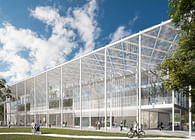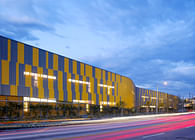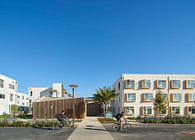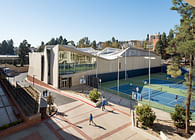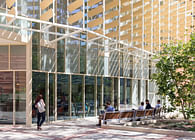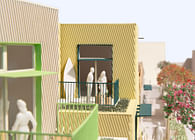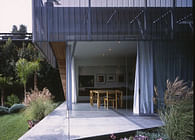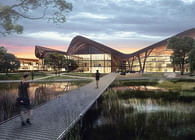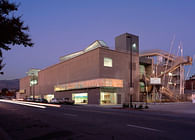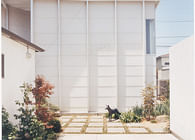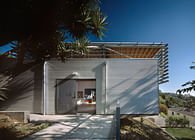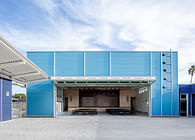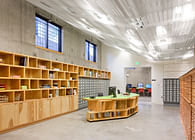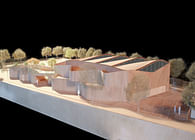
Los Angeles, CA | New York, NY
The client, a second generation citrus rancher, established this grove in 1975 to replace a ranch that the family had operated for 65 years in Orange County, CA. The site, in the foothills of Mt. Palomar, was selected for its western orientation and relatively steep topography to help prevent frost damage during infrequent freezing weather that strikes the area.
The new 2800 sf house replaces an early 20th century ranch house that burned in a wildfire in 1996. It was expected to serve not just as a residence for the rancher but also as a guest house for holiday and vacation visits from his three grown daughters and their families. Due to the loss of the first house, the client requested that a fire resistant construction system be employed for the house.
Two wings of sleeping quarters, relatively opaque to the exterior, flank a large living/dining room that is entirely glazed. These three building elements form a courtyard that open to the grove below and the coastal view beyond. A swimming pool notches into one side of the courtyard for relief on hot summer days. The exterior of the two wings is sheathed in corrugated concrete board; large openings to the courtyard are covered with bi-folding perforated metal panels to both protect from the threat of fire and allow air flow on hot nights.
The perimeter of the building is programmed as the primary environmental conditioning system of the building. This is achieved in two ways—in the refractory capacity of the corrugated concrete board (inert, non-conductive, nonreactive) and in the reflective nature of the formed aluminum panels. In addition to protecting the large glass surfaces from direct sunlight (and wind driven embers), the panels create huge shaded areas immediately outside the main living space. These intermediate spaces allow the house to remain open without being exposed and function as a storm vestibule does in a cold climate.
Status: Built
Location: Valley Center, CA
Additional Credits: Photos by Grant Mudford
